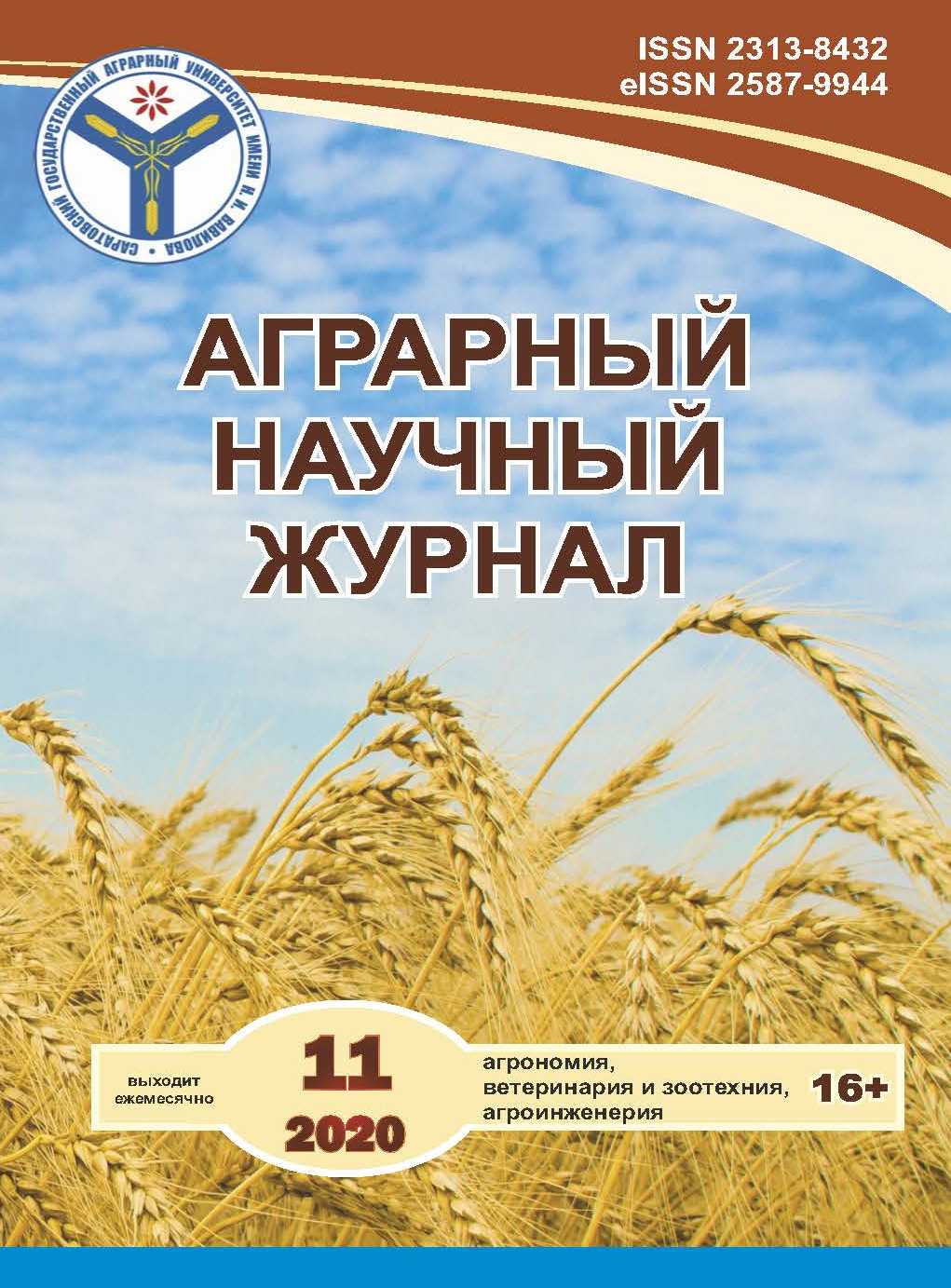ПЕРСПЕКТИВЫ ИСПОЛЬЗОВАНИЯ РОБОТИЗИРОВАННОГО ДОЕНИЯ В МАЛЫХ ФОРМАХ ХОЗЯЙСТВОВАНИЯ
DOI:
https://doi.org/10.28983/asj.y2020i11pp117-120Keywords:
milk production, Holstein breed, robotic milking, lactation, cow behavior, adaptation, family farmAbstract
In the conditions of a peasant farm, a research and production experiment was carried out, the purpose of which was to determine the milk productivity of Holstein cows of Danish selection using a robot milker. It was found that the milk yield of the first lactation cows was within 8237 kg. Taking into account the fact that milk productivity increases in subsequent lactations, it can be concluded that the innovative technology of robotic milking in a family farm allows the genetic potential of animals to be fully realized. The data obtained are consistent with the results of other researchers, which confirms their reliability. The adaptation of animals to robotic milking took place within a month, while the observations of the behavior of cows showed that out of 40 cows, 18 animals voluntarily visited the robotic milker 2 times a day. 22 out of 40 cows had 3 visits. Only 2 cows from the whole group went to milking only once a day. According to the observations of the duration of the milking session, it was found that the time spent by the cows visiting the robotic milker varied on average from 3 to 15 minutes. Moreover, the interval of 5-7 minutes accounts for more than half of all visits. Visits are both shorter (less than 5 minutes) and extended (10 minutes or more). Gentle udder treatment and placement of teat cups not only ensure good udder health, but also improve milk quality. Self-service technology gives animals the right to choose the timing and frequency of visits to the robotic milking station, significantly reduces the stress situation and increases the productivity and quality of milk. The data obtained confirm the feasibility of using a high-tech milk milking scheme in family farms and other small forms of farming. Grants and other forms of financial support from the regional administration will contribute to the further introduction of robots into the livestock system.
Downloads
References
Винницки С., Юговар Е., Артс И., Савиных П.А. Эффективность применения доильного робота на семейных фермах//Вестник Марийского государственного университета. 2014. -№1(13).- С.68-72
Горелик О.В. Федосова Н.А., Киселев Л.Ю. Частота доения- путь к увеличению молочной продуктивности в условиях роботизированной фермы// Аграрный вестник Урала, 2018.№ 11(178),- С.27-31.
Комлацкий В.И., Куликова Н.И., Щукина И.В. Технология производства говядины. - Ростов-на-Дону, «Феникс»,2015.-347 с.
Ляшенко В.В., Ситникова И.В. Продуктивность голштинских коров-первотелок разной селекции// Нива Поволжья, 2014,№3(32).-С.17-19
Маклахов А.В., Жильцов В.И., Никитин Л.А., Углин В.К. Сравнительная оценка экономической эффективности использования доильных роботов в ООО»Покровское» Вологодской области// Вопросы территориального развития,2017,№5(40).-С.1-15.
Морозова Н.И., Мусаева Ф.А., Садиков Р.З. Молочная продуктивность голштинских коров в условиях роботизированного комплекса// Вестник РГВТУ, 2018, № 2(38).-С. 32-36.
Тихомиров И.И., Скоркин В.К. Опыт использования доильных роботов в молочном скотоводстве на примере хозяйств Калужской области // Вестник ВНИИМЖ, 2019.-№ 1(83).-С.160-166
Тяпугин Е.А., Тяпугин С.Е., Углин В.К., Никифоров В.В. Особенности роботизированной технологии доения высокопродуктивных коров на современных комплексах// Достижения науки и техники АПК, 2015.т.29.,№2.-С.57-58
Улимбашев М.Б., Пригодность вымени коров бурой швицкой породык роботизированной технологии доения// Сельскохозяйственный журнал, 2019,№ 2(19),-С.58-65
Цой Ю.А., Бакшева Р.А. Тенденции развития роботизированного доения //Вестник ВНИИМЖ, 2019.-№ 3(35).-С.73-82
Чеченихина О.С. Эффективность внедрения роботизированной системы доения крупного рогатого скота// Аграрный вестник Урала, 2018,№ 08(175).-С.62-69
Шарипов Д.Р., Ахметов Т.М.,Равилов Р.Х. Способ отбора коров для роботизированного доения// Патент РФ № 2723181 от 07.02.2020, МПК А0167/02
Шевхужев А.Ф. Современные технологии производства молока с использованием генофонда голштинского скота: монография, М.ИЛЕКСА.-2015.-392 с.
Downloads
Published
Issue
Section
License
Copyright (c) 2020 The Agrarian Scientific Journal

This work is licensed under a Creative Commons Attribution-NonCommercial 4.0 International License.








